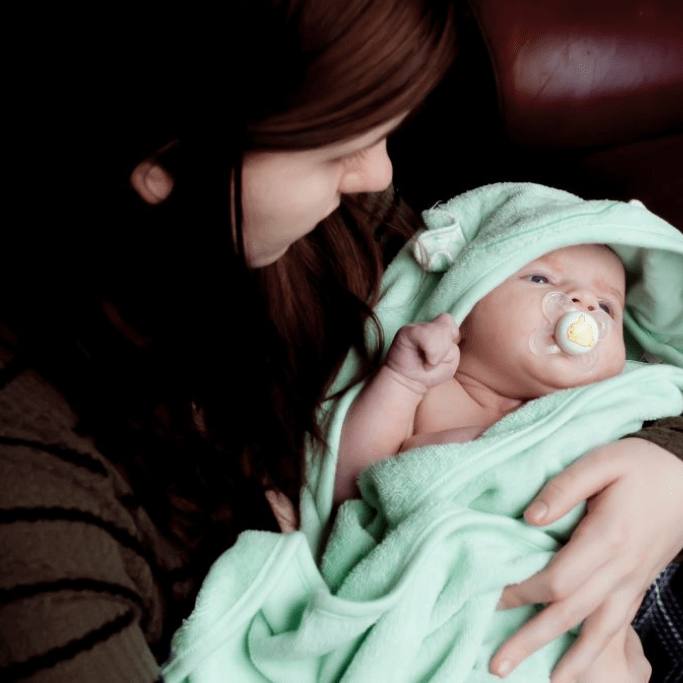Your Cart is Empty
Gift Sets
Categories

How to Identify and Treat Common Baby Skin Rashes: A Parent’s Guide to Gentle Relief
by Adrian Ma November 02, 2023 4 min read
Last updated: May 26, 2025
Welcoming a new baby into your life comes with a myriad of challenges and joys, and as parents, it's our priority to ensure our little ones are happy, healthy, and comfortable. One challenge that many babies face is skin rashes, which can cause them discomfort and irritation. Understanding the different types of rashes, their causes, and how to treat them effectively can help put your mind at ease, knowing you're prepared to handle any rash that may appear on your baby's delicate skin.
Baby skin rashes can occur for various reasons, such as exposure to irritants, allergic reactions, temperature changes, or infections. Because babies' skin is thinner and more sensitive than adults', it is prone to developing rashes more easily. However, most of these rashes are harmless and can be easily treated with simple at-home remedies and by using gentle, hypoallergenic products.
In this article, we'll delve into some of the most common baby skin rashes, providing a guide to help you identify them and offering helpful tips on treating them effectively. Additionally, we will discuss preventative measures that can be taken to reduce the likelihood of rashes occurring, ensuring your baby's skin stays healthy and smooth.
Identifying Common Baby Skin Rashes
1. Nappy Rash
Nappy rash is a common skin irritation that can affect babies and toddlers, usually caused by the damp, warm environment inside a nappy. Characterized by red, sore, and sometimes inflamed skin in the nappy area, it can cause discomfort for your baby. To treat nappy rash, change your baby's nappy frequently and use a gentle, fragrance-free baby wipe or mild soap and water to clean the area. Consider using a barrier cream to help protect your baby's skin from moisture and irritants.
2. Cradle Cap
Cradle cap is a harmless skin condition that appears as greasy, yellowish scales on a baby's scalp. Although unsightly, cradle cap is generally not painful or itchy. To treat cradle cap, gently massage baby oil onto your baby's scalp, allowing the oil to loosen the scales. After a few hours, use a soft-bristle baby brush to lift away the loose scales, then wash your baby's hair with a mild baby shampoo. Repeat this process until cradle cap has subsided.
3. Eczema
Eczema, also known as atopic dermatitis, is a common skin condition in babies that causes red, itchy patches of skin. Eczema can appear anywhere on the body but is commonly found on the cheeks, elbows, and knees. To treat baby eczema, use gentle, fragrance-free products for bathing and moisturizing your baby's skin. Avoiding harsh detergents and keeping your baby's nails short will also help prevent excessive scratching and skin damage.
4. Heat Rash
Heat rash, or prickly heat, occurs when sweat glands become blocked, leading to small red bumps or blisters on the skin. It commonly affects babies, as their sweat glands are not yet fully developed. To treat heat rash, keep your baby cool and dry by dressing them in lightweight, breathable clothing and ensuring their room is well-ventilated. Applying a cool compress to affected areas can help to soothe your baby's skin.
Preventing Baby Skin Rashes
Prevention is often key when it comes to managing your baby's sensitive skin. Some helpful tips for reducing the likelihood of rashes include:
- Choose gentle, fragrance-free products for bathing and moisturizing
- Dress your baby in soft, breathable fabric such as organic cotton
- Use a mild, fragrance-free detergent for washing your baby's clothes and bedding
- Regularly clean and air out your baby's living spaces to reduce allergens and irritants
- Avoid exposing your baby to excessive heat or cold, as temperature extremes can exacerbate skin conditions
Conclusion
As a parent, it's important to remember that while many rashes can be treated at home, always consult your healthcare provider if you have concerns or if the rash worsens, persists, or is accompanied by other symptoms. Our aim with this article is to provide a starting point for understanding and managing common baby skin rashes, giving you the tools to keep your little one's skin looking and feeling its best.
Ready to unravel the mysteries of baby skin rashes? Join us in this helpful guide to ensure your baby's sensitive skin is well cared for and protected. Don't forget to explore our range of organic, hypoallergenicbaby products at The Wee Bean to further support your little one's skin health.
-------------------------------------------
FAQs:
1. What type of clothing is best for babies with eczema?
Soft, breathable fabrics like GOTS-certified organic cotton reduce irritation and are ideal for babies with eczema.
2. Can frequent washing cause baby skin rashes?
Yes. Overwashing or using harsh detergents can strip the skin of natural oils. Use a mild, fragrance-free detergent for best results.
3. Are The Wee Bean products safe for babies with sensitive skin?
Absolutely! All our products are hypoallergenic and made without harmful chemicals, dyes, or pesticides.
4. How often should I change my baby’s clothes to prevent skin rashes?
Change clothes frequently if they get wet or dirty—especially during teething, feeding, or hot weather.
Leave a comment
Comments will be approved before showing up.
Also in Latest Blog Posts

Navigating Holiday Travel with a Baby: Your Complete Guide to a Stress-Free, Joy-Filled Journey
by Adrian Ma December 09, 2025 6 min read
Holiday travel with a baby can feel like stepping into a live reality show, one part adventure, one part uncertainty, and a whole lot of planning. Whether you’re hopping on a long-haul flight to see family or doing a quick getaway to recharge, traveling with little ones during peak holiday season doesn’t have to turn into chao
Recently viewed products
Sign up to get 15% OFF your first order
Sign up to get the latest on sales, new releases and more …



